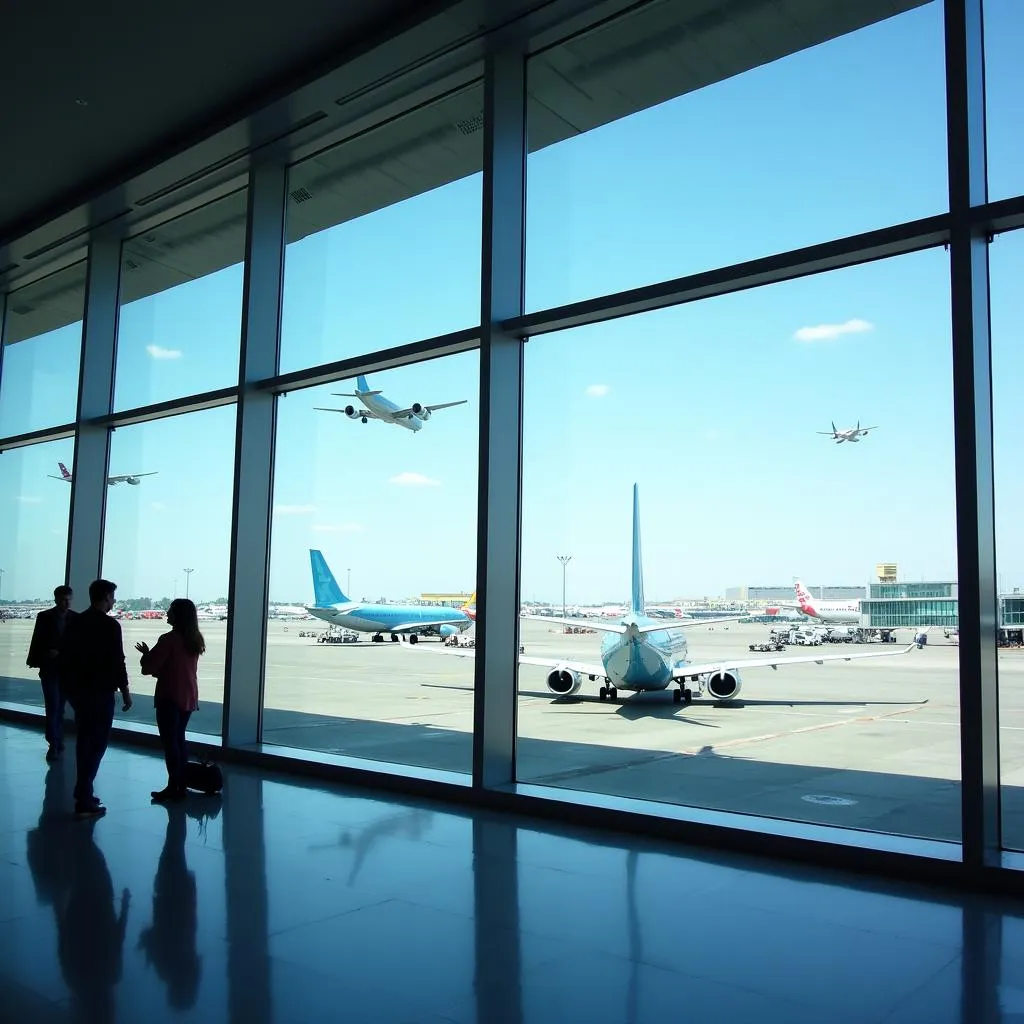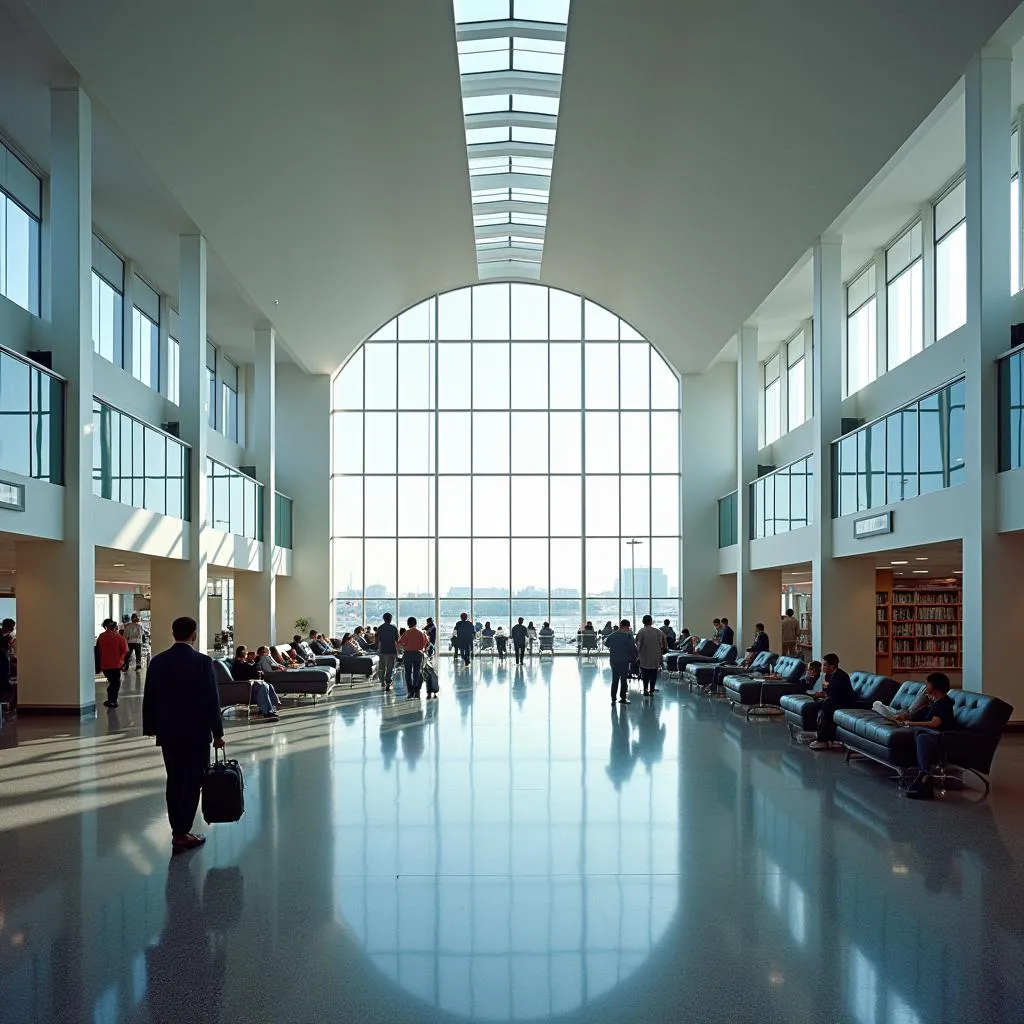An airport is a bustling hub of activity, connecting people and places through the magic of flight. From the moment you step inside, you’re surrounded by a symphony of sounds, sights, and emotions as travelers embark on their journeys. But what exactly makes an airport tick? What are the key elements that ensure the smooth and efficient operation of these gateways to the world? Let’s delve into the fascinating world of airports and uncover the essence of these remarkable facilities.
The Heart of Air Travel: Unveiling the Essence of Airports
Airports serve as vital transportation hubs, facilitating the movement of passengers and cargo across vast distances. They are meticulously designed to provide a seamless and efficient experience for all who pass through their gates. From sprawling terminals to intricate air traffic control systems, every aspect of an airport is carefully orchestrated to ensure the safe and timely arrival and departure of countless flights each day.
10 Lines on Airport: A Glimpse into Their Inner Workings
Here’s a concise overview of airports, encapsulating their key functions and features:
- Gateways to the World: Airports connect cities, countries, and continents, enabling global travel and trade.
- Runway Hubs: Multiple runways accommodate a constant flow of arriving and departing aircraft.
- Air Traffic Control: Highly skilled controllers manage airspace and ensure safe aircraft separation.
- Passenger Terminals: These bustling hubs provide ticketing, baggage handling, security checkpoints, and boarding gates.
- Cargo Terminals: Dedicated facilities handle the transportation of goods and freight by air.
- Support Services: A network of essential services, including refueling, maintenance, and catering, keeps airports running smoothly.
- Security Measures: Stringent security protocols, including passenger and baggage screening, safeguard against threats.
- Navigational Aids: Sophisticated systems, like radar and instrument landing systems (ILS), guide aircraft safely to the ground.
- Economic Engines: Airports generate significant economic activity through tourism, job creation, and business opportunities.
- Gateways to Adventure: For many, airports symbolize the excitement and anticipation of travel to new and familiar destinations.
 Busy airport terminal with planes taking off and landing
Busy airport terminal with planes taking off and landing
Beyond the 10 Lines: Exploring the Facets of Airports
While those 10 lines provide a fundamental understanding, let’s delve deeper into some noteworthy aspects of airports:
The Evolution of Airports: From Grass Strips to Megacities
Airports have undergone a remarkable transformation since the early days of aviation. What were once simple grass strips have evolved into sprawling complexes with multiple terminals, interconnected by intricate networks of taxiways and concourses.
For example, the Bilbao Airport, known for its stunning architectural design, exemplifies the modern airport’s role as both a transportation hub and a symbol of a city’s identity.
Airports as Economic Powerhouses: Driving Growth and Development
Airports are not just transportation hubs; they are economic engines, driving growth and development in their surrounding regions. They create jobs, attract businesses, and facilitate international trade and tourism. The economic impact of a major airport can be substantial, extending far beyond its immediate vicinity.
The Future of Airports: Sustainability, Technology, and Passenger Experience
As we look to the future, airports are embracing innovation and sustainability to enhance the passenger experience. From automated check-in kiosks and biometric security measures to sustainable terminal designs and electric aircraft charging infrastructure, the airports of tomorrow will be smarter, greener, and even more efficient.
 Spacious and modern airport interior with passengers
Spacious and modern airport interior with passengers
Conclusion: Airports – More Than Just Points of Departure and Arrival
Airports are far more than just places where we catch flights. They are intricate ecosystems, connecting people and places, driving economies, and shaping the future of travel. From the bustling terminals to the meticulous work of air traffic controllers, every aspect of an airport plays a crucial role in making air travel possible. So, the next time you find yourself at an airport, take a moment to appreciate the complexity and wonder of these gateways to the world.
Frequently Asked Questions about Airports
1. What is the busiest airport in the world?
Hartsfield-Jackson Atlanta International Airport (ATL) in the United States consistently ranks as one of the busiest airports globally based on passenger traffic.
2. How early should I arrive at the airport before my flight?
It’s generally recommended to arrive at least two hours before domestic flights and three hours before international flights to allow ample time for check-in, security, and navigating the airport. However, checking with your airline for specific recommendations based on your route and time of travel is always advisable.
3. Can I track my flight status at the airport?
Yes, most airports provide flight information displays throughout the terminals, showing real-time updates on arrivals, departures, and gate information. Additionally, you can often find this information on the airport’s website or through mobile apps.
4. What should I do if I miss my connecting flight?
If you miss your connecting flight, it’s essential to contact your airline immediately. They can assist in rebooking you on the next available flight and advise on any necessary arrangements.
5. Are there places to eat and shop within airports?
Yes, airports typically offer a variety of dining and shopping options to cater to travelers’ needs. You’ll often find restaurants, cafes, duty-free shops, bookstores, and more within the terminal buildings.
Need Help Planning Your Next Trip?
For helpful information on specific airports, such as Melbourne Airport images or the distance from Coimbatore to Chennai Airport, browse our website for detailed guides and resources.
Contact AirPort BBI:
Phone: +13089626264
Email: [email protected]
Address: 404 Bothwell St, Oxford, NE 68967, United States
Our dedicated customer support team is available 24/7 to assist you with any inquiries or travel-related needs.

